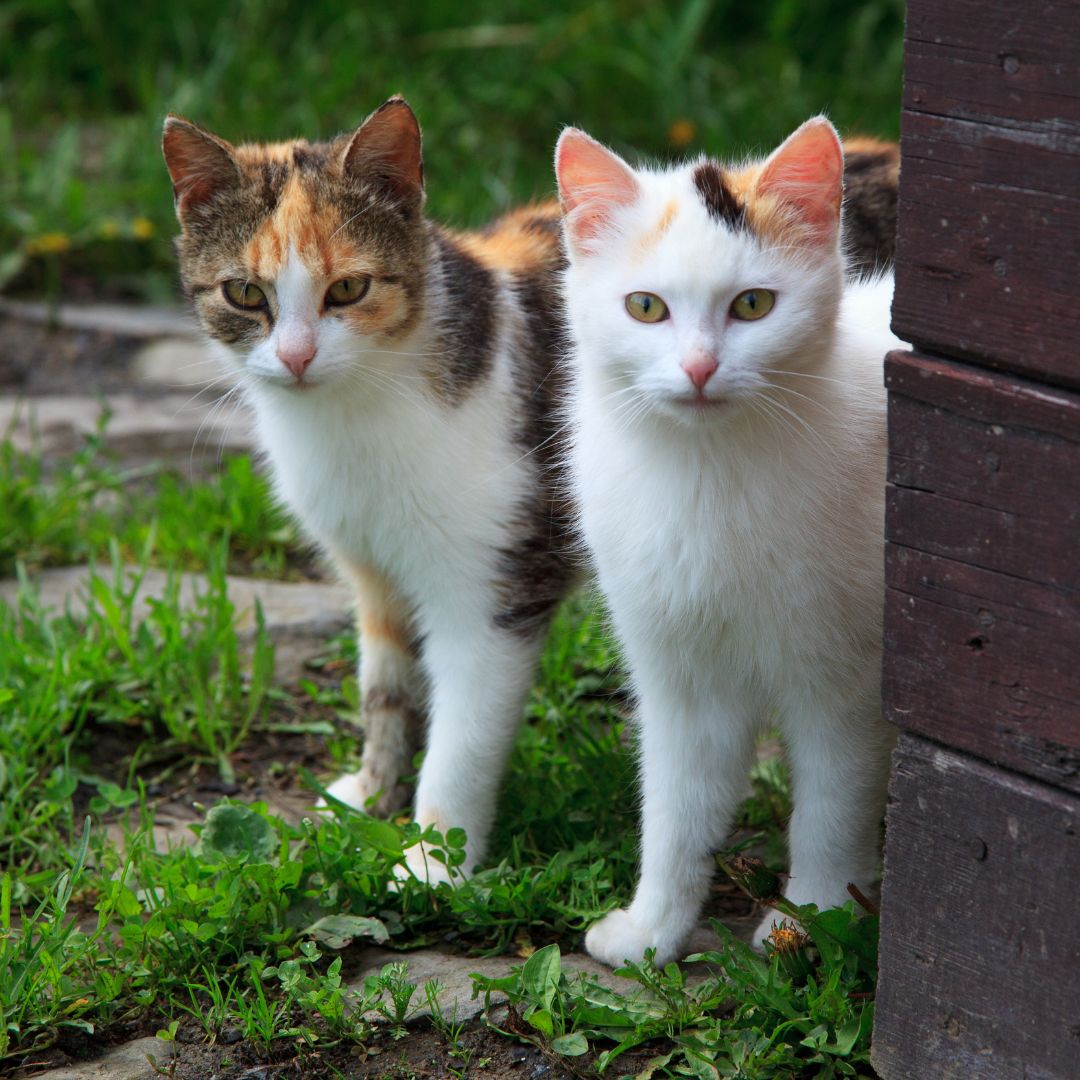
The Pros and Cons of Living In a Multi-Cat Household
Share
Cats are often seen as independent creatures, but they can also enjoy the company of their feline counterparts. For cat enthusiasts, the idea of having multiple cats in one household can hold significant appeal. However, it's crucial to weigh the benefits and challenges before embracing a multi-cat lifestyle. In this article, The Refined Feline will delve into the advantages and hurdles of living with multiple cats.
Advantages of a Multi-Cat Household:
1. Companionship for Cats:
While cats may have a reputation for being solitary animals, they can derive great pleasure and benefit from the company of other cats. In a multi-cat environment, they have the opportunity to engage in play, socialize, and form bonds, particularly if the cats share similar ages or energy levels.
2. Increased Mental Stimulation and Physical Activity:
Multiple cats can stimulate more play and interaction among themselves, providing mental stimulation and physical exercise. Activities such as mutual grooming, play-fighting, and chasing are essential for their overall well-being.
3. Alleviation of Boredom and Behavioral Issues:
With more than one cat in the household, there's a reduced likelihood of boredom, especially for indoor cats. The presence of fellow felines creates a dynamic environment that can help alleviate stress-related behaviors like excessive grooming or destructive scratching.
4. Learning and Socialization:
Kittens learn crucial social cues and behaviors from older cats. In multi-cat households, younger felines can benefit from the guidance of adult cats who can teach them appropriate cat etiquette and boundaries.
By considering these advantages, cat lovers can make informed decisions about whether a multi-cat household is the right choice for them and their feline companions.
Challenges of a Multi-Cat Household:
1. Territorial Disputes and Aggression:
Cats are inherently territorial creatures, and introducing a new cat into a home can trigger stress and aggression if not managed carefully. Territorial conflicts may manifest through fights, spraying, and other undesirable behaviors.
2. Increased Cost of Care:
Having more cats naturally leads to higher expenses. This includes the costs of food, litter, veterinary care, and potentially pet insurance. It's essential to assess whether you have the financial means to support multiple feline companions.
3. Health Management:
Maintaining the health of several cats can pose challenges. Illnesses can spread more easily in households with multiple cats, and it may be harder to monitor individual health and detect behavior changes promptly.
4. Space and Resource Allocation:
Ensuring adequate space and resources for each cat is vital. This encompasses having multiple feeding stations, litter boxes, and resting areas. Insufficient resources can lead to competition and stress among the cats.
Considering these challenges can help prospective cat owners make informed decisions about whether they are prepared to handle the responsibilities and potential hurdles of maintaining a multi-cat household.
Creating a harmonious environment in a multi-cat household requires thoughtful planning and consideration:
1. Introducing New Cats:
Take the time to introduce new cats gradually and cautiously. Begin by keeping them separated and allowing them to become familiar with each other's scent. Slowly progress to supervised face-to-face meetings to minimize potential aggression and stress.
2. Providing Adequate Resources:
Ensure there are plenty of resources to go around, such as multiple litter boxes, separate feeding areas, and plenty of resting and hiding spots. Consider investing in furniture like The Refined Feline’s Lotus Cat Tower to give each cat their own space to climb and relax.
3. Regular Veterinary Care:
Schedule regular check-ups with the veterinarian to monitor and maintain the health of all your cats. Stay up-to-date on vaccinations, flea and tick prevention, and routine health screenings to keep them in optimal condition.
4. Monitoring Interactions:
Keep a close eye on how your cats interact with each other. Watch for any signs of stress or aggression, and be prepared to intervene or adjust living arrangements if necessary to maintain harmony.
5. Meeting Individual Needs:
Recognize that each cat has its own personality and preferences. Spend quality one-on-one time with each cat, catering to their specific needs, whether it's playtime, quiet cuddling, or alone time.
6. Balancing Attention and Affection:
Ensure that all your cats receive equal attention and affection to prevent jealousy or feelings of neglect. Spend time bonding with each cat individually, as well as engaging them in group activities like interactive toy play to foster a sense of community among them.
By following these guidelines, you can create a harmonious and fulfilling environment for all the cats in your multi-cat household.
